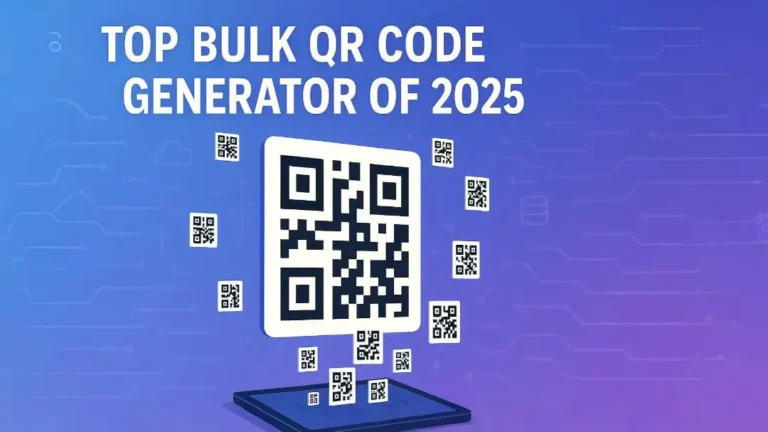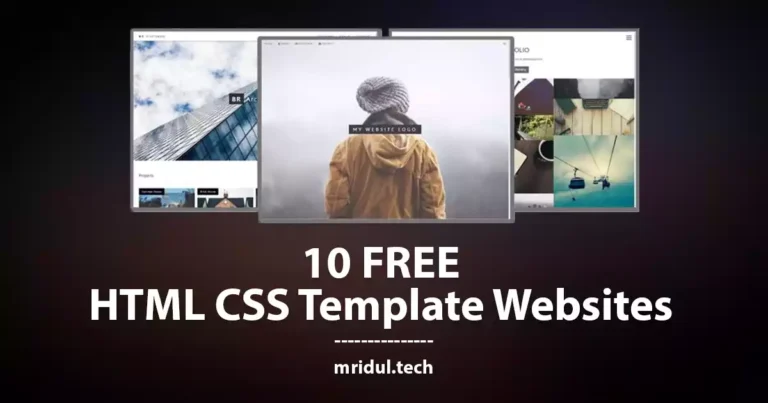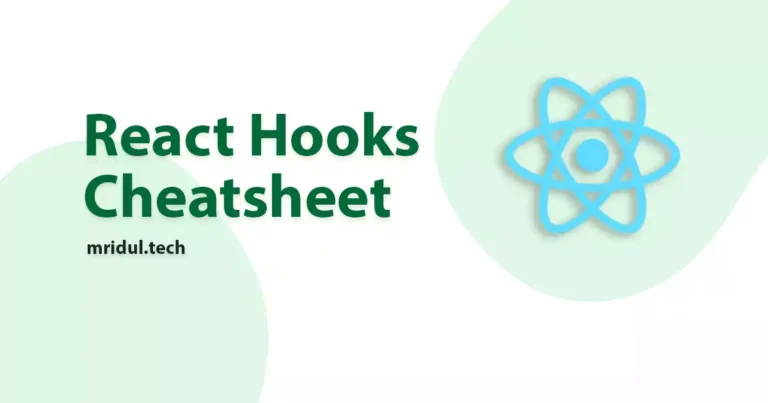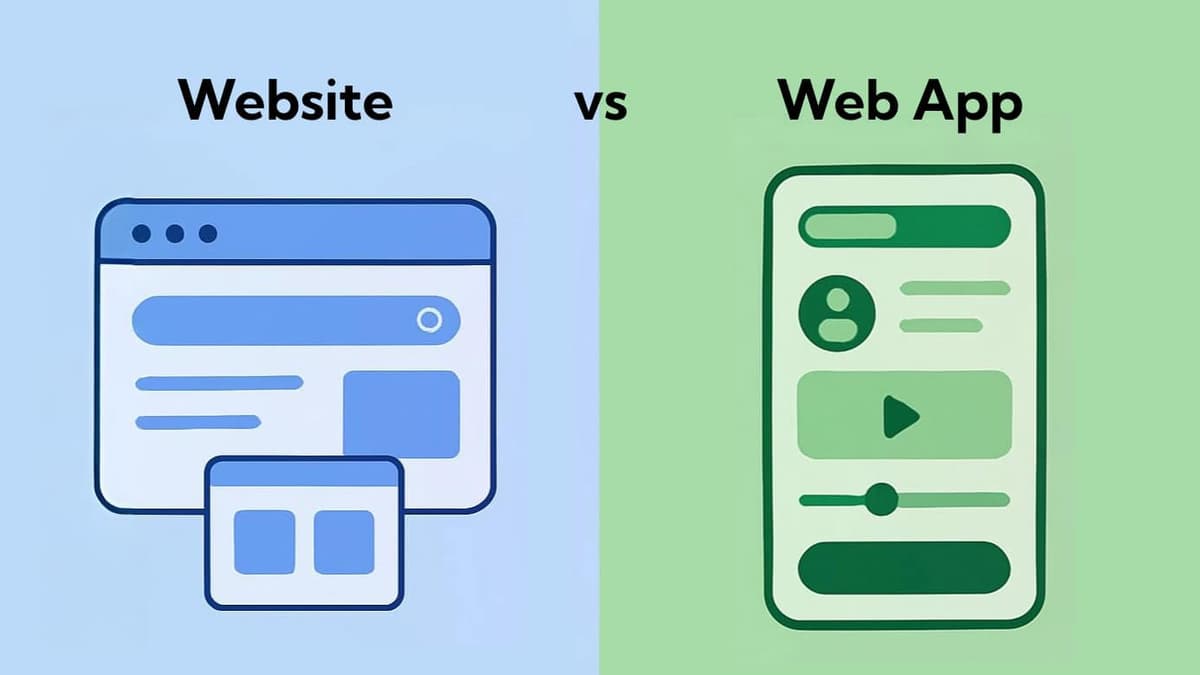In today’s digital-first world, choosing the right online platform is more important than ever. Businesses, startups, and individuals are often faced with a key decision: should we build a website or a web app? While both serve users through a browser, their purpose, functionality, and level of interactivity are quite different. Understanding the difference between a website vs web app can help you make smarter decisions that align with your goals, budget, and user expectations. In this article, we’ll break down everything you need to know-clearly and thoroughly-so you can confidently choose the right path forward.
What is a Website?
A website is a collection of interlinked web pages that provide static or semi-static content to users. Websites are primarily informational and are designed to deliver read-only content such as blogs, company profiles, portfolios, news, and FAQs.
Key Characteristics of a Website
- Static or dynamic content: Most websites use HTML, CSS, and JavaScript for layout and design.
- Minimal user interaction: Users can navigate, read, and sometimes submit forms.
- Focus on content delivery: Information-centric, often SEO-driven.
- Lightweight architecture: Requires minimal backend processing.
- Real-World Website Examples
- Wikipedia
- BBC News
- Portfolio sites
- Company homepages
What is a Web Application?
A web application is an interactive, software-like experience delivered through a browser. Unlike websites, web apps offer advanced functionality, allowing users to perform tasks, manipulate data, and experience dynamic content.
Key Characteristics of a Web App
- Highly interactive: Web apps respond to user actions with real-time feedback.
- Business logic intensive: Handles complex operations via server-side and client-side processing.
- Data-driven: Often integrated with databases, user profiles, and dashboards.
- Responsive and scalable: Built using frameworks like React, Angular, or Vue.
- Real-World Web App Examples
- Gmail
- Google Docs
- Canva
- Trello
Website vs Web App: Core Differences
| Feature | Website | Web Application |
|---|---|---|
| Purpose | Content distribution | Task execution & user interaction |
| Interaction Level | Minimal | High |
| Authentication | Optional | Mandatory for most |
| Complexity | Low to medium | High |
| Integration | Basic (e.g., forms, maps) | Advanced (e.g., APIs, real-time data) |
| Maintenance | Less frequent | Requires regular updates |
| Performance | Faster load time | Dependent on logic complexity |
| Development Stack | HTML, CSS, JS | Full stack (frontend + backend) |
| Offline Access | Rarely supported | Often supported via PWA |
Use Cases: When to Choose a Website
A website is ideal for businesses and individuals who want to establish an online presence, share information, and attract traffic via SEO. Choose a website when:
- You’re launching a personal blog or portfolio.
- You need a static business site with services, pricing, and contact info.
- You’re building a news platform or media outlet.
- Your platform does not require user logins or interactivity.
Advantages of Websites:
- Faster to develop and deploy
- Lower maintenance cost
- Better SEO indexing for content-rich pages
- Simpler architecture for non-technical management
Also Read: Top Bulk QR Code Generator of 2025
Use Cases: When to Choose a Web Application
Web apps are best suited for businesses looking to provide customized user experiences, streamline operations, or digitally transform processes. Choose a web app when:
- Your platform requires user authentication and role management.
- Users need to perform actions: create, edit, share, or delete data.
- You require real-time updates, dashboards, or notifications.
- You plan to scale features dynamically based on feedback.
Advantages of Web Applications:
- Enhanced user engagement through interactivity
- Supports business logic and automation
- Custom workflows and integration with third-party services
- Advanced analytics and user tracking
Progressive Web Apps (PWA): The Best of Both Worlds?
Progressive Web Apps combine the best of websites and web apps. They run in the browser like websites but offer an app-like experience with offline capabilities, push notifications, and home screen access.
Why Consider a PWA?
- Cost-effective alternative to native apps
- Works offline or on poor networks
- SEO-friendly and easily discoverable
- Improved user retention via push notifications
Also Read: How programming languages got their names
Performance and Scalability Considerations
Choosing between a website and a web application also depends on your long-term scalability goals.
Websites: Optimized for SEO and Content Delivery
- Ideal for high-traffic, content-centric platforms.
- Best for static content with fewer backend requests.
- Minimal load on server resources.
Web Apps: Engineered for Functionality
- Requires robust backend systems and APIs.
- Better suited for cloud infrastructure and microservices architecture.
- Demands regular updates, monitoring, and DevOps support.
Also Read: Semantic HTML: Boost Accessibility, SEO, and User Experience
Security Implications: Protecting User Data
Web applications handle sensitive data, user sessions, and sometimes financial transactions, making security a top priority.
Websites:
- SSL is often sufficient.
- Security concerns focus on spam prevention, SEO safety, and content integrity.
Web Apps:
- Require encryption, authentication tokens (JWT), CSRF/XSS protection.
- Involve user role management, access controls, and audit logging.
Cost and Time to Market: Website vs Web App
Understanding the development cost and timelines helps make the right decision.
| Factor | Website | Web App |
|---|---|---|
| Development Time | 2–6 weeks | 3–6 months |
| Cost Estimate | $1,000 – $10,000 | $15,000 – $100,000+ |
| Team Required | Designer + Frontend Dev | Full Stack Dev + DevOps + QA |
Also Read: The Power of SVG fill currentColor
Which One is Right for Your Business?
Ask yourself the following questions:
- Do you need users to log in, interact, or transact?
- Is your goal to present content or enable functionality?
- Do you have the budget and resources to maintain a complex app?
- Will your platform need to scale over time?
If your goal is branding, reach, and visibility, start with a website. If your goal is engagement, automation, or service delivery, build a web app.
FAQs on Website vs Web App
Google Docs, Gmail, Trello, and Canva are classic web apps with dynamic features and interactivity.
Yes! With added functionality, databases, and interactivity, a website can evolve into a web app.
Websites generally have the SEO edge. Web apps can rank well but need extra technical SEO efforts.
If your users need to log in, input data, or complete tasks online, then yes - a web app is essential.
They’re not replacing them entirely, but they’re definitely gaining ground due to their speed, offline access, and installability.
You may also like
Top Shadcn Component Libraries You Must Use

May 28, 2025
·4 Min Read
Modern web development demands speed, consistency, and elegant UI. Shadcn-based libraries deliver all three. Whether you’re building dashboards, SaaS tools, or dynamic websites, these libraries simplify your workflow and enhance performance. Below is a curated list of the best Shadcn component libraries categorized by functionality. 🌐 What is Shadcn and Why It Matters in UI […]
Read More
How programming languages got their names

May 24, 2025
·7 Min Read
The fascinating world of programming languages is not only filled with intricate algorithms and powerful tools but also rich with history. Each programming language has its own unique story behind its creation, and one of the most intriguing aspects is the origins of their names. In this article, we explore how programming languages got their […]
Read More
Top Bulk QR Code Generator of 2025

Apr 28, 2025
·3 Min Read
In the digital era, QR codes have become indispensable tools for businesses, marketers, educators, and event organizers. Generating them in bulk can save time, increase efficiency, and streamline processes. We have curated a comprehensive Top Bulk QR Code Generator of 2025 available today to help you choose the perfect tool. What is a Bulk QR […]
Read More
10 FREE HTML CSS Template Websites

Mar 16, 2024
·3 Min Read
In the ever-evolving world of web design, having a solid foundation is key to creating visually appealing and functional websites. HTML and CSS are the building blocks of the web, and having access to free templates can save you both time and effort. In this article, we’ll introduce you to 10 FREE HTML CSS template […]
Read More
React Hooks Cheatsheet

Jan 21, 2024
·4 Min Read
React, a popular JavaScript library for building user interfaces, introduced Hooks to make functional components more powerful and expressive. Let’s dive into the React Hooks Cheatsheet to understand how they enhance the development experience. React Hooks Cheatsheet In the ever-evolving landscape of web development, React Hooks have become indispensable for building dynamic and efficient user […]
Read More
Free Udemy Courses for Web Developers

Dec 30, 2023
·4 Min Read
In the fast-paced world of web development, staying up-to-date with the latest technologies and skills is crucial. However, enrolling in courses can be expensive, and not everyone has the budget for it. This is where Free Udemy Courses for Web Developers come to the rescue. In this article, we’ll explore this invaluable resource, providing you […]
Read More



